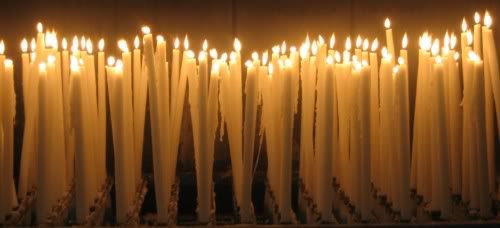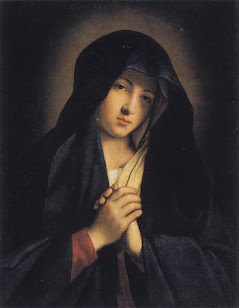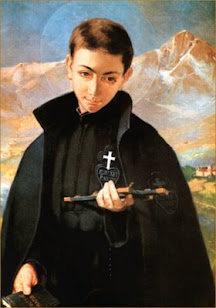Today, September 10, we remember the five Franciscan martyrs of the Georgia region (died 1597), including Pedro de Corpa, Blas de Rodriguez, Antonio de Badajoz, Fray Miguel de Anon, and Francisco de Verascola. These five holy men were martyred in modern-day Georgia while working among the Guale Indians. Until their death, they preached and upheld the tenets of the faith, even following threats to their lives. These courageous martyrs are in the process of being recognized as saints, with investigation and determination on-going.
Pedro de Corpa was born in a tiny village in central Spain in the diocese of Madrid-Alcala. He was ordained a Franciscan priest, and served his congregation as a skilled preacher and gifted confessor in the province of Castile. Pedro came to the New World as a missionary in 1587, landing near St. Augustine, Florida, where the Franciscans had their headquarters. He subsequently traveled to the Georgia coast, on a mission trip to visit the Guale village of Tolomato. One of his companions described Pedro by saying, “Since he was a wise and holy man, the love of God burned in his heart, and by means of prayer, abstinence, and self-discipline he gave good example to the Indians of the West whom he strove to convert."
Blas de Rodriguez was born in the Spanish town of Cuacos. He had joined the Franciscan Province of St. Gabriel in the strict Alcantaran branch of the order. Ordained to the priesthood in the 1580s, Fray Blas served in Spain for several years and received the title of confessor. In 1590, he volunteered and was sent as a missionary to Florida. Upon arrival, he soon joined Fray Pedro on his mission to the Guale.
Antonio de Badajoz was a Franciscan lay brother born in La Albuera near Badajoz. Like Fray Blas, he was a member of the strict Alcantaran reform. Antonio accompanied Fray Pedro on his mission to Florida, and earned recognition for immediately learning the Guale language. Antonio subsequently served as interpreter and translator for the mission priests, and following their example, played an important role in evangelizing to the native Guale.
Miguel de Anon was responsible for the mission on St. Catherines Island. Having arrived two years prior to the other missionaries, he was a member of the Franciscan province of Castile and ordained to the priesthood in Spain.
Francisco de Verascola was a member of the Cantabrian Franciscan province, and after his ordination he served for a few years in the region of Vizcaya before volunteering to be sent to Florida. A man of great physical stature and strength, he served as bodyguard to officials visiting the area (despite being an ordained priest), and easily interacted with the Guale youth who included him in their athletic games and sports. Through his witness, many were brought to Christ.
The five missionaries worked in Tolomato amongst the Guales, and assisted in the running of what came to be a predominantly Christian village. Life for missionaries in the New World was very difficult, with few comforts of home. Rather, the Franciscan men lived as their congregations lived, in poorly insulated huts made of tree trunks and palmetto fronds, eating only what could b grown, gathered (acorns) fished or hunted. The men lacked basic items of clothing and had few liturgical vestments. They were constantly exposed to the elements, especially excessive heat and voracious insects. Most alarming, there was no militia nearby to assist them, should they find themselves at odds with those they ministered to.
The men lived their harsh lives without complaint, offering all they had to the Lord, and ministering with zeal and fervor. While they taught the scriptures strictly, the chief’s son (Juanillo) embraced polygamy. The chief, with the assistance of the Franciscans, publicly denounced this practice, and refused his son the right to succeed him as chief. Juanillo left in disgrace, but returned days later with warriors. On September 13, 1597, Juanillo led warriors smeared in war paint to Fray Pedro’s hut, where he was preparing for morning Mass. They killed the friar with stone clubs, severed his head and displayed it on a pike by a nearby river landing.
Three days later, they tracked Fray Blas and captured him. Held prisoner for two days, Fray Blas was allowed to celebrate Mass one last time. Historians tell us that he delivered the following sermon:
My sons, for me it is not difficult to die. Even if you do not cause it, the death of this body is inevitable. We must be ready at all times, for we, all of us, have to die someday. But what does pain me is that the Evil One has persuaded you to do this offensive thing against your God and Creator. It is a further source of deep grief to me that you are unmindful of what we missionaries have done for you in teaching you the way to eternal life and happiness.
After distributing what little he had to those in his flock, he was bound by ropes, and then clubbed to death as Fray Pedro had been.
On the 17th, Fray Miguel and Brother Antonio were killed, and on the 18th, Fray Francisco met the same fate. Fray Pedro Fernandez de Chozas wrote to the Spanish governor at St. Augustine, Florida, shortly after their deaths: "How they must have been lonely, Senor General, these little lambs, at the moment of martyrdom."
Following the death of the Franciscans, the Guale missions were disbanded, to be resumed seven years later in 1605. They prospered for nearly a century, instructing and converting the native Indians, until English colonists arrived in 1702 and destroyed the missions.
The courage and bravery of these five Franciscan missionaries—and the countless others who stout-heartedly preach the Gospel around the world—inspires us today to boldly proclaim the truth of our faith. In comparison to all that was given by the Church’s holy martyrs, what are we prepared to risk to spread the Gospel of our Lord?
Year 2: Day 252 of 365
Prayer Intentions: Courage
Requested Intentions: Clear speech for a child (C); Conversion of a family (A); Successful employment (S); For the healing of impaired vision (F); For a couple experiencing difficulties (L); Successful employment after finishing college (M); Mother’s health (A); Financial security, freedom from anxiety (S); For a son and cousins (L); Peace and civility (B); Successful examination results (D); Safety of family, strength, courage, wisdom (C); For the souls of a departed father and brother, finding of a suitable marriage partner (R); Successful pilgrimage, deepening of prayer life (R); Restoration of health (J); Restoration of health (S); Freedom from pride (A); For children and marriage (M); For the birth of a healthy baby (Y); For personal family intentions, for the sick, poor, hungry, and homeless (G); Financial security and peace (J); Grace, peace, and obedience to the will of God in a marriage (H); Successful and blessed marriage for sin, freedom from anxiety for husband, spiritual contentedness for family (N); Employment and health for a husband (B); Recovery and health of a mother (J); For a family to grow closer to the Church, salvation for all children (D); Successful employment (L); Successful employment (S); Renewal of faith life (A); Support for an intended marriage, health for friend and aunt (J); Mental health assistance for son (G); Freedom from illness (S); Successful employment (C).
Why pray the Rosary every day for a year?
Each time the Blessed Virgin has appeared-- whether it be to Saint Bernadette Soubirous at Lourdes; to Lucia, Jacinta, and Francisco at Fatima; or to Mariette Beco at Banneux-- she has asserted the importance, saving grace, and power of praying the Holy Rosary on a daily basis. Based upon her words, the Rosary is penance and conversion for sinners, a pathway to peace, an end to war, and a powerful act of faith in Jesus Christ. Pope Paul VI presented the Rosary as a powerful means to reach Christ "not merely with Mary but indeed, insofar as this is possible to us, in the same way as Mary, who is certainly the one who thought about Him more than anyone else has ever done."
To show us how this is done, perhaps no one has been more eloquent than the great Cardinal Newman, who wrote: "The great power of the Rosary consists in the fact that it translates the Creed into Prayer. Of course, the Creed is already in a certain sense a prayer and a great act of homage towards God, but the Rosary brings us to meditate again on the great truth of His life and death, and brings this truth close to our hearts. Even Christians, although they know God, usually fear rather than love Him. The strength of the Rosary lies in the particular manner in which it considers these mysteries, since all our thinking about Christ is intertwined with the thought of His Mother, in the relations between Mother and Son; the Holy Family is presented to us, the home in which God lived His infinite love."
As Mary said at Fatima, "Jesus wants to use you to make Me known and loved. He wishes to establish the devotion to My Immaculate Heart throughout the world. I promise salvation to whoever embraces it; these souls will be dear to God, like flowers put by Me to adorn his throne."

Subscribe to:
Post Comments (Atom)









I never knew this before.
I will pray for these five martyrs.
I would like your permission to repost your blog, in part, about the Five Franciscan Martyrs to my blog. I would be sure to provide a link to your blog. Thanks for posting this, I found it enlightening especially when we are trying to defence Christian marriage as well.
Tom:
Please feel free to repost. Thanks for reading!
Jacob